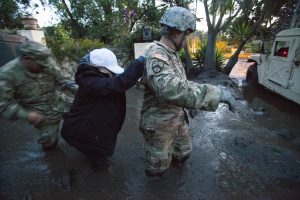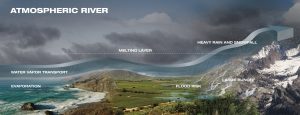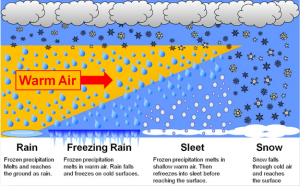A series of intense storms have battered the west coast, perhaps most severely in California, where mudslides, flooding, and heavy snowfall in the Sierra Nevada mountain range have made for very dangerous conditions over the past week or so. With more storm systems approaching for the next several days, conditions are likely to deteriorate.
One might think, “this is the rainy season, so why would a few storms cause so much chaos?”
The most destructive forces of these storms isn’t the precipitation, nor the flooding it causes, rather it is the mudslides that have become ever more frequent and widespread in recent years. The reason for this is the increasing occurrence of wildfires in the now longer dry season. When a wildfire moves through an area, the vegetation- and its root system- is taken away, and thus the soil on steeper terrain isn’t anchored by anything (and is unable to absorb as much moisture), thus a once-normal precipitation event can knock it loose, unleashing devastation downhill, causing scenes like the image above to unfold.
The recent mudslides and associated problems in California are wintertime manifestations of a larger problem: climate change-induced drought. The summers in the western US are becoming longer, hotter, and drier, leading to increased incidence and severity of wildfires, with some of the most destructive occurring as recent as this past summer. If this trend continues, the problems caused by precipitation-when it does fall- will only become more and more disruptive.
Granted, the observed storms have been stronger than usual, each tapping into deep tropical moisture as far away as Hawaii, via an atmospheric river. In a nutshell, an atmospheric river is a narrow “stream” of unusually moist air aloft associated with a mid-latitude cyclone, and although they can occur anywhere in the mid latitudes where there is sufficient moisture, their impact is arguably felt most by the North American west coast. The following diagram displays the impacts of a “landfalling” atmospheric river.
A final thought: despite all the ski resorts in California enjoying record snowfall due to these recent storms, those residing near burn scars left by recent wildfires are being plagued by fires that have already been extinguished. I’m reminded just how destructive and productive the weather can be at the same time.







Recent Comments